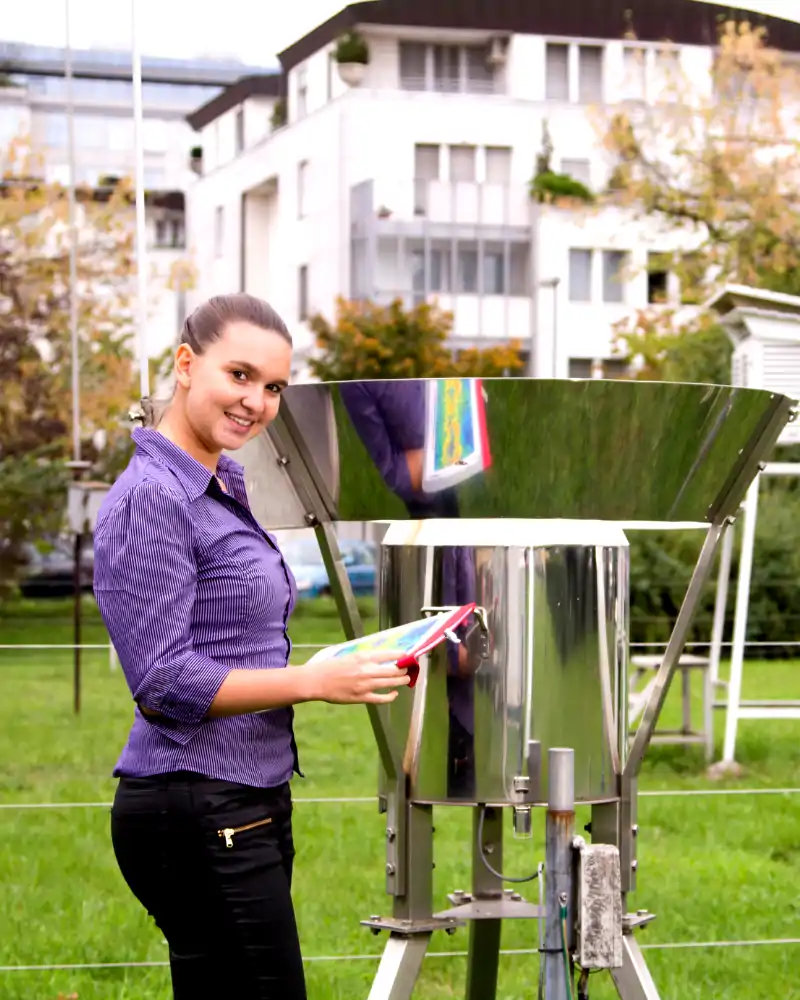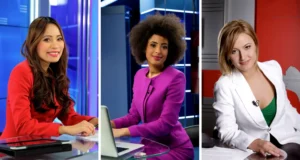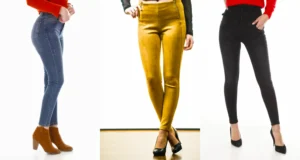Female meteorologists, like other professionals in the media industry, may wear tight dresses as part of their work attire for various reasons. These may include personal style preferences, the need to project a polished and professional image, and the demands of the job, such as moving around and demonstrating weather phenomena visually appealingly.
It is noteworthy that the choice of dress for female meteorologists is personal and can be influenced by different factors. Some meteorologists may choose to wear more fitted or tighter dresses as part of their personal style, while others may prefer looser or more relaxed fits. Ultimately, the dress worn by a female meteorologist is a matter of personal preference and should not be taken as a reflection of their expertise or professionalism.
Why do female meteorologists wear tight dresses?
Here are a few possible reasons why female meteorologists may choose to wear tight dresses.
Personal style preference
Personal style preference is one possible reason why female meteorologists and other professionals in the media industry may choose to wear tight dresses. Some people simply prefer to wear more fitted or tighter dresses as part of their personal style and may feel more comfortable and confident in these types of dresses.
It is important to note that personal style preference is a subjective and individualized matter, and what one person may consider a tight dress may be seen as a more relaxed fit by someone else.
Professional image
The professional image is another reason female meteorologists may wear tight dresses. In the media industry, presenting a polished and professional image is important, and tight dresses may be seen as a way to achieve this.
Tight dresses can be a stylish and sophisticated choice of clothing and may be seen as a way to convey a sense of professionalism and credibility. However, it is important to note that professional image is subjective and can be influenced by various factors, including personal style, industry norms, and cultural expectations.
Choosing appropriate and comfortable clothing for the specific job or activity that reflects the individual’s personal style and preferences is important.
Demonstrating weather phenomena
Demonstrating weather phenomena is one possible reason female meteorologists may wear tight dresses. As part of their job, meteorologists may need to move around and explain weather phenomena visually appealingly. Tight dresses may allow for greater mobility and flexibility, which can be helpful in these situations.
For example, a tight dress may allow a meteorologist to move more freely and easily demonstrate the movements of weather patterns on a map or other visual aid. Tight dresses may also be more comfortable and allow for greater freedom of movement when performing outdoor activities such as demonstrating weather phenomena.
Comfort
Comfort is another reason why female meteorologists and other professionals in the media industry may choose to wear tight dresses. Tight dresses can be made from stretchy, breathable fabrics that are comfortable to wear and allow for a full range of movement.
In the media industry, professionals may be required to stand or be in front of cameras for extended periods. It is important to choose comfortable attire that allows for ease of movement. Tight dresses made from stretchy, breathable fabrics may be a comfortable choice for these situations.
Is a weather girl a meteorologist?
A weather girl is a term used to refer to a female meteorologist or weather presenter who appears on television to provide weather forecasts and reports. These professionals are typically trained in meteorology and strongly understand atmospheric science and weather patterns.
To become a weather girl or weather presenter, you need to have a background in meteorology or a related field and be knowledgeable about atmospheric science and weather patterns. Many weather girls have a degree in meteorology or a related field, and some may also have additional training or certification in broadcast journalism or other related areas.
Overall, a weather girl is a professional who is trained in meteorology and has expertise in providing accurate and informative weather forecasts and reports to the public.

Are female news anchors required to wear skimpy clothes?
There is no general requirement for female news anchors to wear skimpy clothes. In fact, it is generally expected that news anchors dress professionally and appropriately, regardless of their gender.
News anchors are expected to present a polished and professional image, and their clothes should be appropriate for the specific occasion and respectful of the audience. Skimpy or revealing clothes are generally not considered appropriate for news anchors or other professionals in the media industry.
Why do female news anchors wear sleeveless dresses?
Female news anchors or news ladies choose to wear sleeveless dresses for a variety of reasons. These may include personal style preferences, the need to project a polished and professional image, and job demands, such as moving around and demonstrating weather phenomena visually appealingly.
Sleeveless dresses can be a stylish and sophisticated choice of attire and may be seen as a way to convey a sense of professionalism and credibility. They may also be more comfortable to wear, especially in hot weather, and may allow for greater freedom of movement.
FAQ
Do the weather girls wear their own clothes?
Some weather girls may wear their own clothes, while others may have their clothes provided for them by their employer. According to Fox2Now, many meteorologists have to buy their own on-air wardrobes.
Do weather reporters read from a teleprompter?
No. According to several sources, including WKYT, WDIO, and Twisted Sifter, meteorologists do not use teleprompters when delivering their forecasts.
Who dresses the ladies on Fox News?
The ladies on Fox News are dressed by a wardrobe team, which includes a wardrobe whisperer named Gwen Marder.
Why do weathermen exaggerate?
Some weather forecasters may exaggerate the probability of precipitation, a phenomenon known as “wet bias,” to increase the usefulness and actionability of their forecast1. The Weather Channel has been shown to have a wet bias in some cases, reporting a higher probability of precipitation than is actually expected.
What is the unbiased word for weatherman?
The unbiased word for “weatherman” is “meteorologist”. Other synonyms include “weatherperson,” “weathercaster,” and “climatologist”



